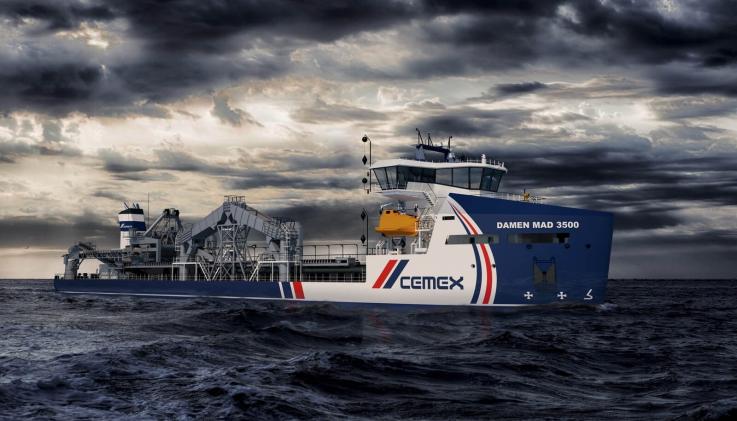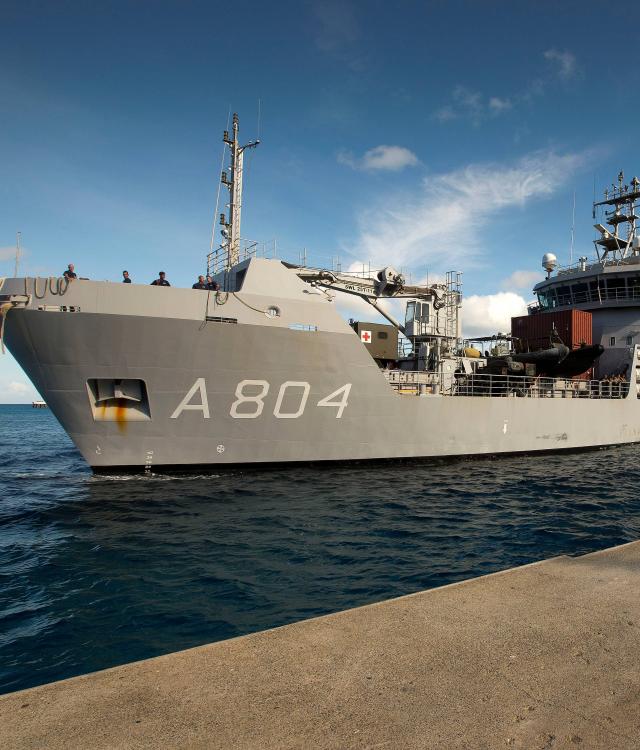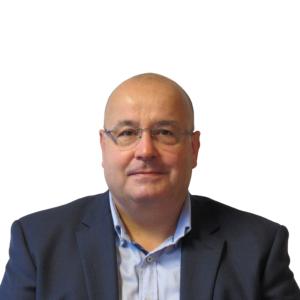Cemex Go Innovation
Cemex Go Innovation, Damen's first Marine Aggregate Dredger (MAD) 3500

Damen Shipyards Group's first Marine Aggregate Dredger (MAD) 3500 is a ground-breaking design by Damen and the British owner CEMEX UK Marine Limited, a leader in the building materials industry.
Damen Shipyards Group's first Marine Aggregate Dredger (MAD) 3500 is a ground-breaking design by Damen and the British owner CEMEX UK Marine Limited, a leader in the building materials industry. The highly advanced and efficient dredger is designed to extract sand and gravel from the sea bed at depths of up to 55 meters, in challenging locations including the North Sea. Alewijnse was contracted for the turnkey electrical and dredging automation systems on board. The construction of the vessel, named Cemex Go Innovation, took place at Damen Shipyards Galati (DSGa) in Romania.
Alewijnse scope of work
The Alewijnse scope of the project comprised the engineering and delivery of the e-package, including electrical panels and switchboards, cables, installing materials, an important part of electrical outfitting parts and systems. Additional activities undertaken by Alewijnse included steelwork, general installation works including installing the electrical systems driving the dredging equipment as well as those managing the general vessel operations.
Involved in the first design
The decision by Damen to choose Alewijnse for the electrical works on MAD3500 was based on the presence of the Alewijnse facility in Galati, Romania and the strong track-record of Alewijnse in supporting the Damen Shipyards Group with its specialist skills in the construction of previous vessels.
Alewijnse Project Manager Valentin Petrea commented on the project: “Being a new concept design, We were very glad that we were involved right from the beginning. It was a challenging project, but we worked together to make it a success. We proved once again that our experience and quality can ensure satisfaction for our client and contribute to them winning more orders within this product range in the future.”
MAD 3500
The MAD 3500 is a 103.5-metre dredger with a deadweight of just under 7,000 tonnes and a loaded operating speed of approximately 12 knots. When delivered she will be the most efficient dredging vessel in the CEMEX fleet. In comparison to CEMEX’s 99-metre, 6,000 tonne, Sand Heron, which the new ship will replace, this translates into an additional 20% of aggregates that can be delivered per trip. The vessel will receive Lloyd’s Register’s ECO-notation, due to its green credentials, as well as a CAC-3 notation recognizing its high standard of crew comfort.
Experienced in electrical systems for dredgers
Alewijnse has extensive experience in the electrical newbuild and refit of all kinds of dredgers. Alewijnse also worked on the electrical refit of the Samuel de Champlain, a 117-metre, 8500m³ trailing suction hopper dredger (THSD), which is being converted to dual-fuel capability combining LNG and MGO. Alewijnsealso worked at the design, delivery and commissioning of the complete electrical and automation installations on board two new TSHDs designed to extract sand and gravel aggregates from the seabed, in partnership with Barkmeijer Shipyards in the Netherlands.

